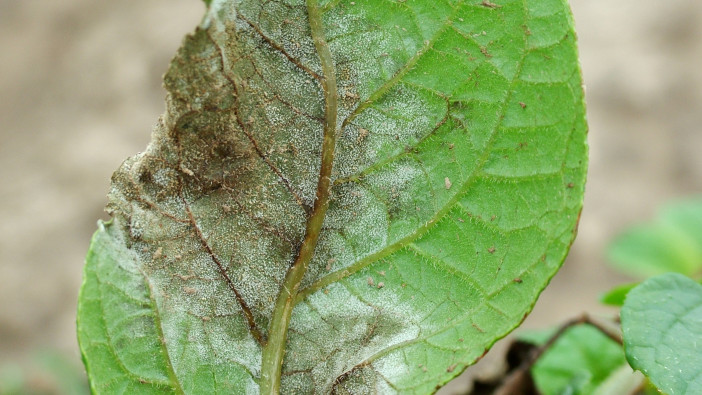The agronomy firm Hutchinsons is reminding growers not to become complacent in the fight against blight, with the prevalence of a new aggressive strain.
While another dry spring may have reduced the early blight risk so far this year, Hutchinsons root crop technical manager Darryl Shailes is reminding us that it was a similar theme last year which ‘quickly turned into a big blight year’. “It saw many crops carrying significant loading of potato blight, even where the best chemistry was used.”

Last year, the weather was a key factor but it also coincided with an increase in the EU_36_A2 blight strain. Data from the crop protection company Belchim suggested that EU_36_A2 has the ability to produce many more spores in a wider range of weather conditions, compared to strains that had previously dominated UK blight populations: EU_13_A2 or EU_6_A1.
EU_36_A2, a strain resistant to fluazinam, has a capacity similar to EU_36_A2. However, with the amount of fluazinam used across the industry reduced, EU_37_A2 is mostly confined to the West and North of England.
“EU_36_A2 is also outcompeting [EU_36_A2], which is common in the epidemics of recent seasons, when one strain tends to dominate field infection with very little mixture of genotypes being identified,” notes Mr Shailes.
But, AHDB’s monitoring of last season did show an increase in the number of ‘other’ genotypes found in Scotland – suggesting that there may be some new, unidentified strains being created by genetic recombination.
2022 blight programmes
To combat new blight strains, Mr Shailes is encouraging growers to consider the changing nature of blight infections when putting together control strategies through the season. In particular, he says, when crops go through rapid canopy expansion to full canopy.
Mr Shailes advises that the strongest option with good systemic activity, to protect rapidly growing canopies, is benthiavalicarb + oxathiapiprolin. ‘Using it for the third or fourth blight spray, or earlier if necessary, is generally an effective timing’.
He recommends reducing the spray interval to seven days from the normal 10, for high risk situations; the actives can also play a useful role during any high-risk periods that occur once a crop reaches the stable canopy phase.
Nonetheless, Mr Shailes adds that product stewardship is still vital, and growers should use a range of different actives and alternate modes of action throughout the season.
He cautions against the overuse of fluazinam, which must be supported by tank mixing other strong blight actives – to reduce resistance in the EU_37_A2 blight strain.
“There are various options available for different scenarios, so product choice should be discussed with your agronomist and tailored to disease risk, variety and other considerations, such as the need for controlling other diseases, such as Sclerotinia, Botrytis, or Alternaria.”
With that, Mr Shailes is urging growers and agronomists to sign up to Syngenta’s BlightCast, to receive email warnings of predicted blight risks in their local area. To do so, go to www.syngenta.co.uk/blightcast.


